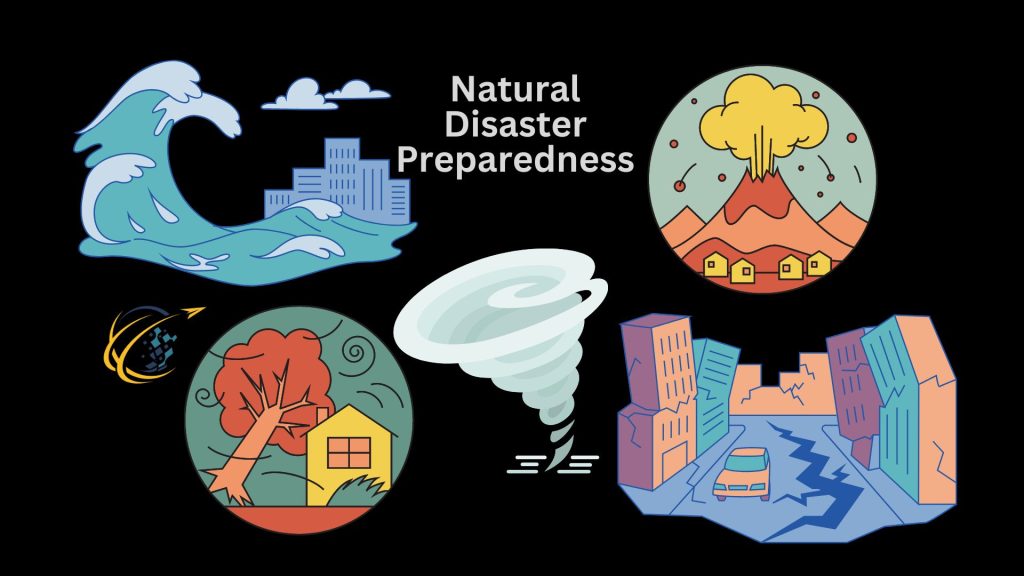Natural disasters can strike without warning, disrupting business operations and threatening the long-term stability of companies. Natural disaster preparedness is not just an option but a necessity in today’s unpredictable world. Whether it’s hurricanes, earthquakes, floods, or wildfires, disasters can severely impact business operations. The key to mitigating these impacts lies in having a comprehensive preparedness plan in place, which protects assets, ensures employee safety, and enables businesses to recover quickly.
Businesses that prioritize natural disaster preparedness are better positioned to continue serving their customers during crises. Effective disaster planning requires foresight, risk assessment, and the right resources. In this article, we will explore the strategies and steps needed to implement effective natural disaster preparedness .
The Importance of Disaster Preparedness
Natural disaster preparedness is critical to ensuring continuity and minimizing disruptions. Without a plan in place, businesses risk losing revenue, assets, and customers. Many companies are unprepared for the impact that a major natural disaster can have on their operations. This lack of preparedness often results in prolonged downtime, reputational damage, and financial losses. Furthermore, it is important to note that small businesses are particularly vulnerable, with research showing that up to 40% of small businesses never reopen after a natural disaster.
Investing in natural disaster preparedness not only protects a business’s physical assets but also its human resources. Employees play a critical role in recovery efforts, and ensuring their safety is paramount. Moreover, when employees know their company is prepared for emergencies, it fosters trust and confidence, which is essential for morale and productivity. Additionally, by prioritizing preparedness, businesses demonstrate corporate responsibility to their customers, partners, and community.
Preparedness also enhances resilience. In today’s competitive landscape, customers expect uninterrupted service, and businesses that cannot meet those expectations risk losing them to competitors. Having a plan allows businesses to maintain service continuity and recover faster, strengthening their position in the market. As extreme weather events and other natural disasters become more frequent, businesses that invest in preparedness are more likely to thrive in the long run.
Identifying Risks and Vulnerabilities
A crucial step in natural disaster preparedness is identifying the specific risks that are most likely to affect operations. Each business faces unique vulnerabilities depending on its location, industry, and infrastructure. For example, businesses in coastal regions may need to prioritize hurricane preparedness, while companies in seismic zones should focus on earthquake readiness.
Risk assessment involves evaluating the probability of various natural disasters and their potential impact on the business. This includes understanding how a disaster could affect employees, supply chains, physical assets, and digital infrastructure. A comprehensive risk assessment enables businesses to develop tailored preparedness plans that address their specific vulnerabilities.
Once risks are identified, businesses should prioritize mitigation efforts. This may involve upgrading facilities to withstand certain natural disasters, such as reinforcing buildings in hurricane-prone areas or installing fire-resistant materials in regions susceptible to wildfires. Additionally, businesses should review insurance coverage to ensure that it adequately covers potential losses from natural disasters.
Developing a Comprehensive Disaster Plan
Natural disaster preparedness requires a well-documented and regularly updated disaster plan. This plan should outline the procedures to follow before, during, and after a disaster. Key elements of the plan include evacuation routes, emergency communication protocols, and resource allocation.
One critical component of the disaster plan is establishing clear communication channels. Businesses need a reliable way to communicate with employees, customers, suppliers, and other stakeholders during a crisis. This could include emergency contact lists, social media updates, and automated messaging systems. Effective communication ensures that everyone involved knows what actions to take, reducing confusion and panic.
Another important aspect is developing a business continuity plan (BCP). A BCP outlines how a business will continue operating during and after a disaster. It includes strategies for maintaining critical functions, such as IT systems, customer service, and supply chain management. For example, companies that rely heavily on digital infrastructure should ensure that their data is backed up in offsite locations to prevent data loss during a disaster.
Regular training and drills are also essential for ensuring that all employees are familiar with the disaster plan. Employees should know their roles and responsibilities in the event of a disaster and have the skills needed to respond effectively. Drills also help identify weaknesses in the plan that can be addressed before a real emergency occurs.
Leveraging Technology for Preparedness
Technology plays a significant role in natural disaster preparedness. Cloud computing, for instance, provides a secure way to back up important data and ensure that it remains accessible during a disaster. By storing data in the cloud, businesses reduce the risk of data loss due to damage to physical servers. This enables companies to quickly recover and restore operations after a disaster.
Another technology that can enhance preparedness is geographic information systems (GIS). GIS tools help businesses visualize their exposure to natural disasters by mapping risks such as flood zones, earthquake fault lines, and wildfire-prone areas. Using GIS data, companies can make informed decisions about where to locate new facilities and how to protect existing ones.
Mobile apps and software solutions are also valuable tools for emergency communication and monitoring. Many apps allow businesses to send real-time alerts to employees, track the status of facilities, and receive weather updates. By leveraging these technologies, businesses can improve their response times and minimize the impact of disasters.
Recovering After a Disaster
Even with the best preparedness plan in place, natural disasters can still cause significant disruption. Therefore, recovery efforts are an integral part of natural disaster preparedness. After a disaster strikes, businesses must assess the damage, restore operations, and communicate with employees, customers, and partners.
The recovery process begins with a thorough assessment of the physical and operational impact. Businesses should inspect their facilities, inventory, and equipment for damage and determine which systems need to be restored first. This is where the business continuity plan comes into play, as it prioritizes critical functions and outlines the steps needed to resume operations.
Once the immediate response is complete, businesses must focus on long-term recovery. This involves repairing damaged infrastructure, replacing lost assets, and reassessing the disaster preparedness plan based on lessons learned. Additionally, businesses should evaluate their insurance coverage performance and determine if they need to make adjustments for future preparedness.
The speed and efficiency of the recovery process can have a significant impact on a business’s reputation. Customers and partners expect timely updates and a clear plan for resuming normal operations. Transparent communication during the recovery phase helps maintain trust and demonstrates the business’s commitment to resilience.
Natural disaster preparedness is essential for minimizing disruption, ensuring employee safety, and maintaining operational continuity. By identifying risks, developing a comprehensive disaster plan, leveraging technology, and focusing on recovery, businesses can protect themselves from the worst effects of natural disasters. As extreme weather events and other natural threats become more frequent, prepared businesses will better navigate these challenges and emerge stronger.


